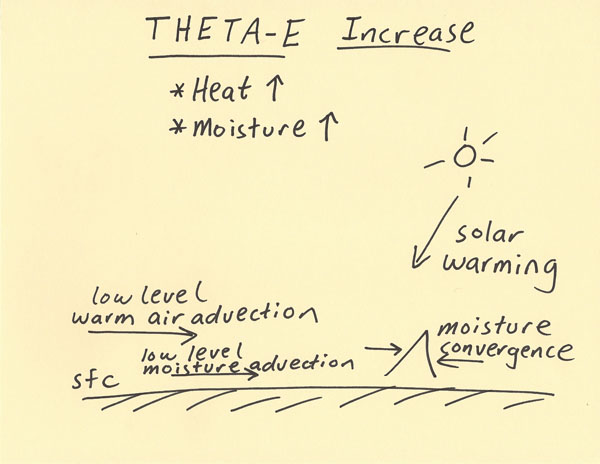
METEOROLOGIST JEFF HABY
Theta-E involves the combined effects of heat and moisture. The Theta-E value is found by taking a parcel of air, releasing the latent heat
of moisture in the parcel and then brining the parcel to the 1000-mb level. An increase of moisture will increase the latent heat released
and will thus increase the Theta-E. An increase of temperature will also increase the Theta-E. Two of the important ingredients for
thunderstorm development are heat and moisture. The Theta-E is an important index since it combines both heat and moisture into one
index value. A chart of Theta-E can be produced, and from the chart the regions or axes with higher Theta-E have an increased chance
of being the trigger point for convective uplift. Heaviest rain can also occur in the regions or axes with a higher Theta-E.
The chart below shows several factors that can increase Theta-E. Two common ways the temperature can increase is from solar heating and warm air
advection. Moisture can increase from moisture advecting in from a moisture source. Moisture can also increase when a convergence axis forces
moisture to merge closer together which results in a greater moisture density and thus an increase in dewpoint. Thus, convergence boundaries
are common regions in which convective uplift begins.

|
|
|

